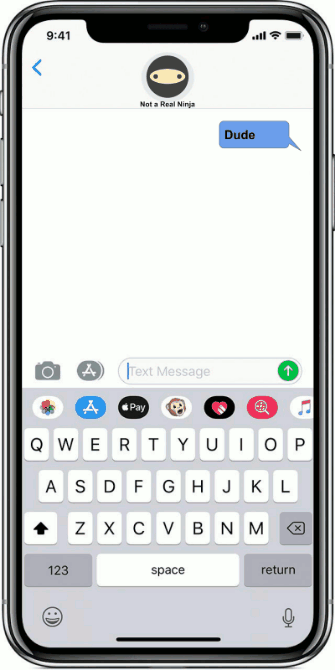Storytelling with Text Messaging
The process is easy; you just copy and paste the appropriate shape to keep the conversation going.
Teaching students to recognize both sides of an argument, and/or have structured conversations centered around class content, regularly finds its place in our classrooms. We teach argumentative essay writing, debate protocols, conversational cues (in all languages), etc… These lessons can be completed through traditional classroom strategies, through podcasting…. and perhaps through texting.
There are a number of websites that let you create a fake text message but I have found many are loaded with questionable (and clickable) advertisements or are just plain blocked in school. To circumvent these roadblocks, I have created a Google Slides deck using an iPhone X frame for inserting text messages in.
The process is relatively easy, you just copy and paste the appropriate shape to keep the conversation going. One of my students called me out on the fact that there is a green iMessage arrow but I made my conversation bubbles blue… thanks Brady, I fixed it for class!

Students can check their work by previewing the slideshow and clicking the next arrow. One bubble at a time should appear on each slide if they have done it correctly.
Once completed, students can make the slideshow run itself with the following steps in Google Slides:
- Click “File”
- Select “Publish to the web”
- select “auto play” with 2 second transitions
- A link will be created that can be shared.
For a bit more of an extension to this activity you can upload the slides to Tall Tweets to create an animated GIF like the one I used.
Our students are texting and communicating via social media on mobile devices quite regularly, perhaps activities like this will provide us with teachable moments in the classroom.
Tech & Learning Newsletter
Tools and ideas to transform education. Sign up below.
Have fun!
Micah
cross posted at micahshippee.com
Micah Shippee, PhD is an out-of-the-box-doer, a social studies teacher, and a technology trainer. He works to bridge the gap between research and practice in the educational sector. Micah explores ways to improve motivation in the classroom and seeks to leverage emergent technology to achieve educational goals. As an innovative "ideas" person, Micah likes to think, and act, outside the box. Micah is motivated and energetic, taking a creative approach towards achieving goals. As an Educational Consultant, and Keynote Speaker, he focuses on the adoption of emergent technology through the development of an innovative learning culture. Micah believe that innovativeness is the pedagogy of the future.
